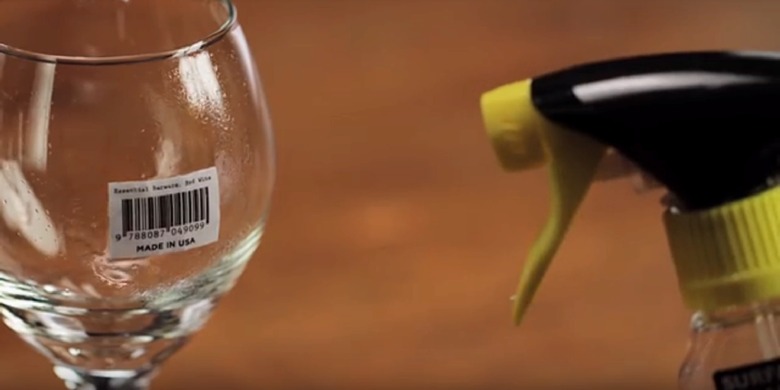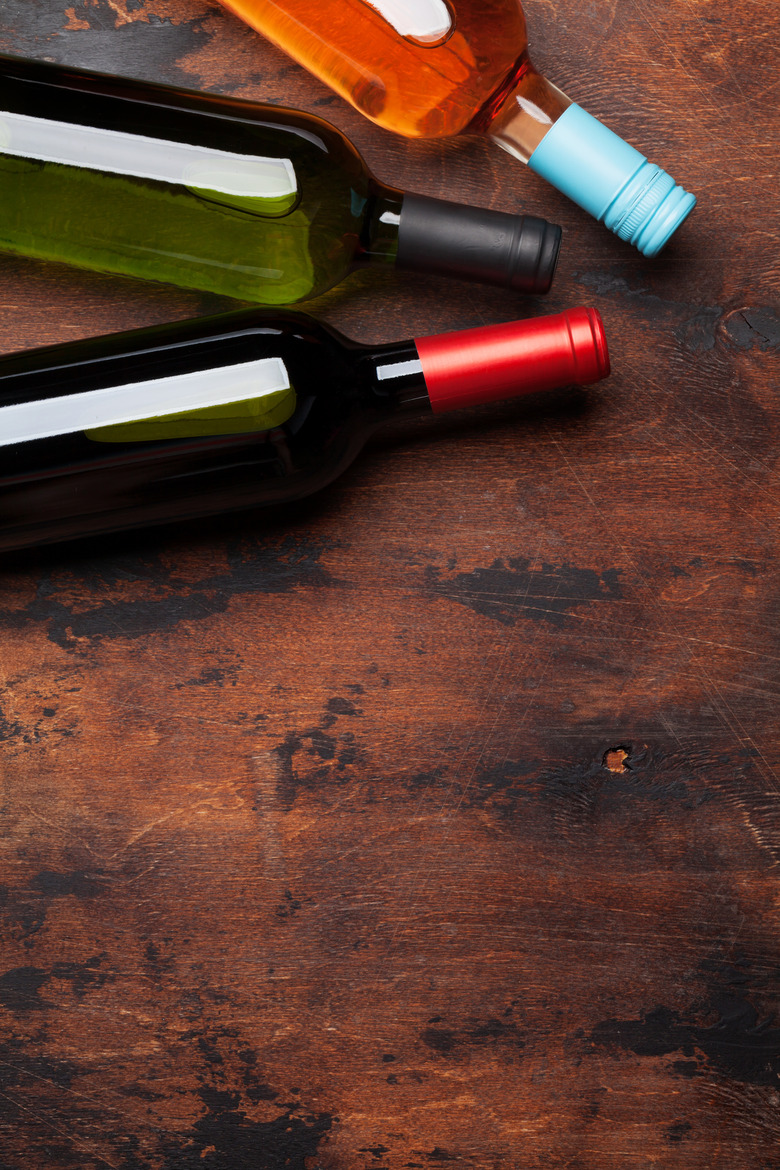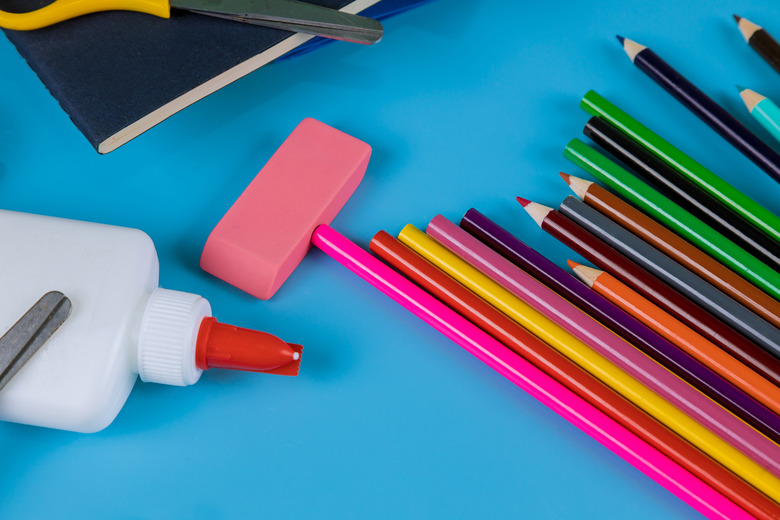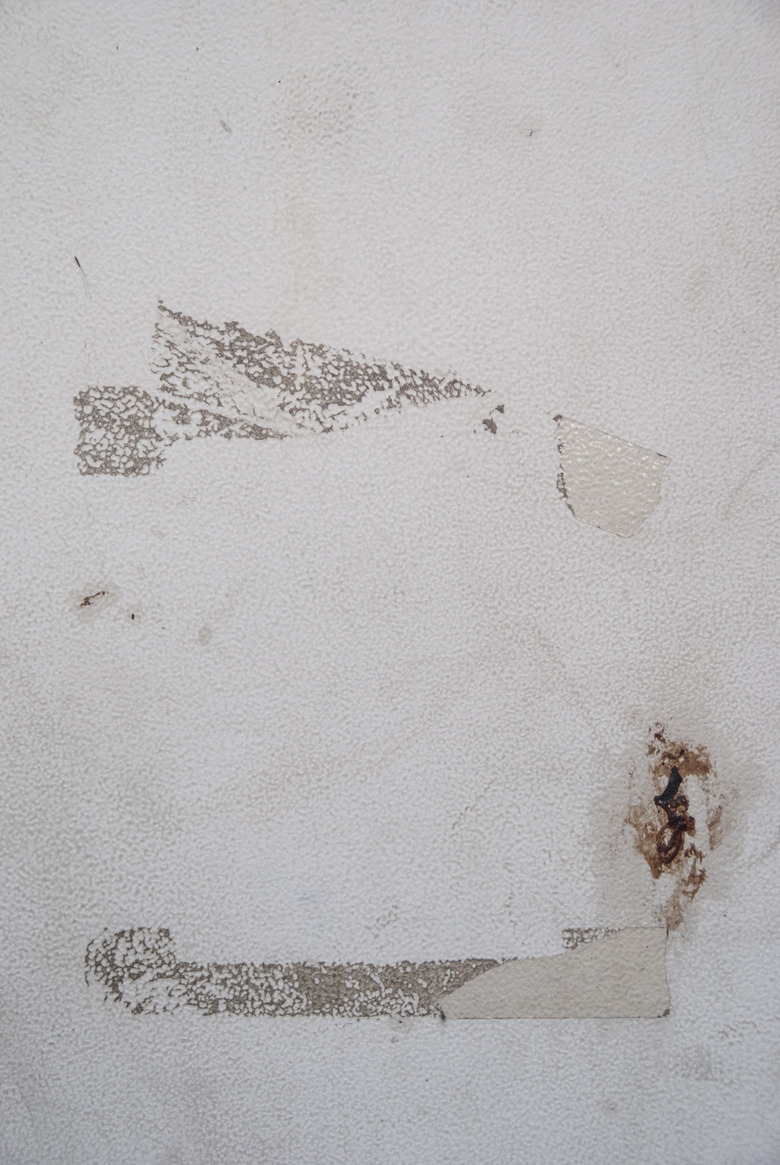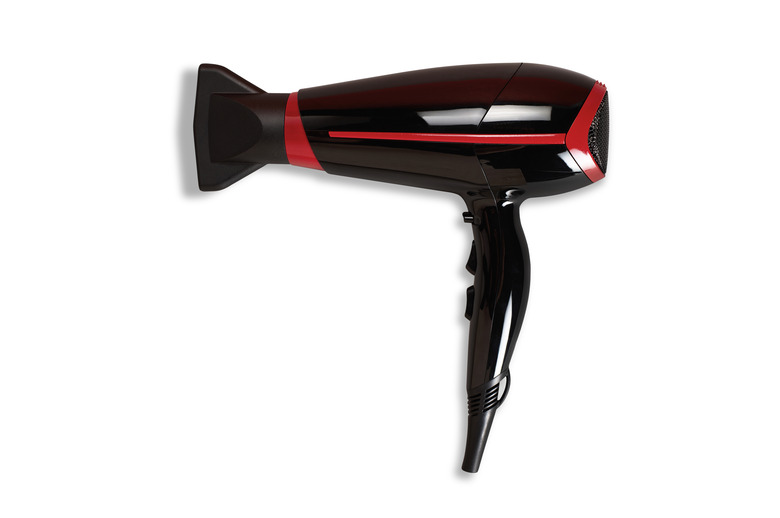How To Remove Sticker Residue
Stickers, adhesive labels and tape may be simple to apply, but removing them sometimes proves to be a sticky situation. Even if you've managed to remove most of the actual label or sticker, the adhesive residue left behind may require another substance to remove it completely. Hot water, vegetable oil or an adhesive remover will remove most types of adhesive residues.
A Hot Water Soak
A Hot Water Soak
Glass jars, bottles and similar items that can be submerged in hot water are the easiest to deal with when it comes to stubborn sticker residue. After you've peeled off as much of the sticker as possible, fill the sink with hot tap water and a squirt or two of dish soap. Set the item in the sink so the sticker residue is completely submerged.
After 30 minutes or so, lift the item out of the water, then rub it with your fingers or a nylon scrub pad. The residue and remaining bits of paper should come off. If the object still feels tacky, rub it with a soapy dishcloth, then rinse again. If the residue is extra stubborn, soak it in the water a little longer.
Quick Fix for Flat Surfaces
Quick Fix for Flat Surfaces
Flat, smooth items such as plastic storage bins and the bottoms of vases, bowls and drinkware often contain manufacturer or price code labels that don't come off easily. A large rubber eraser provides enough friction to remove much of the paper and adhesive residue. This method also works for removing stickers placed on walls or windows.
If the sticker is on a wallpapered surface, be careful not to rub too hard, as the eraser could damage the wall covering. The key to speedy removal is light friction that moves the adhesive and sticker remnants, rather than extreme pressure. An eraser also removes many types of scuff marks from hardwood floors.
The Kitchen Oils Method
The Kitchen Oils Method
Stubborn adhesives that won't come off even after a hot water soak often respond to oily products from the kitchen, such as cooking oils. This method works well on non-porous materials such as plastic, glass or even sealed wood. While oils will remove adhesives from virtually any surface, materials such as fabrics may stain. If you wish to try an oil on such a surface, test it on an inconspicuous area first.
Rub a little vegetable oil or mayonnaise over the sticky substance. After 15 minutes or so, rinse the oil or mayo off, then wipe the item down with a soapy dishcloth, rinsing the object once again. Oily materials do an excellent job of breaking down adhesive residue. Even creamy peanut butter does the trick, although it requires a soapy water cleanup afterwards.
Alcohol, Vinegar or More Alcohol
Alcohol, Vinegar or More Alcohol
Rubbing alcohol, white vinegar and even cheap vodka also do a great job at removing sticker residue. These liquids are also great for areas that might be stained by chemical adhesive removers or oily substances.
Wet a folded paper towel with the chosen clear alcohol or vinegar, then set the wet paper towel atop the sticker residue. After 10 to 15 minutes, remove the paper towel and rub the residue away with your fingers, a nylon scrub pad or even a flexible plastic scraper.
Adhesive-Removing Products
Adhesive-Removing Products
Any product designed to remove stickers and tape residue does a great job at such tasks. A water-displacing lubricant also helps loosen sticky residue from materials such as glass or plastic. In either case, these liquids may stain absorbent materials such as cardboard boxes, clothing or upholstery, so test them on an inconspicuous area first. Apply a few drops of the chosen product onto the residue, then let it sit for a few minutes. Wipe the affected area with a paper towel afterwards. If necessary, wipe it again with a slightly damp paper towel.
Hot Air Treatment
Hot Air Treatment
Hot air from a hair dryer also helps remove extremely stubborn stickers, such as those that have been in place for years. Select the highest heat setting, then turn the hair dryer on, holding it a few inches above the project area. After a few minutes, try rubbing the adhesive away with a vinyl scrub pad or a plastic scraper. If working on glass, a straight-edged razor blade scraper may be used. But razor blades are not recommended for other surfaces, as they can cause damage.
The heat treatment may take several tries to get most of the residue off. Afterwards, remove any gummy matter with soap and water, rubbing alcohol or an adhesive remover.
